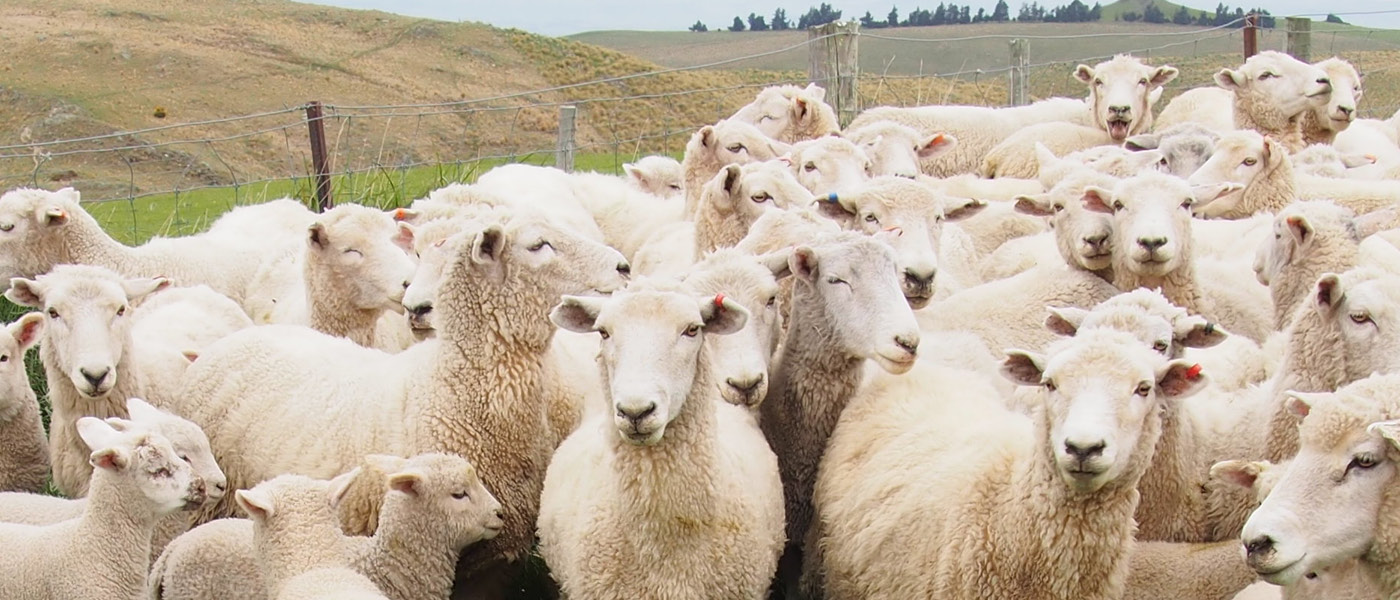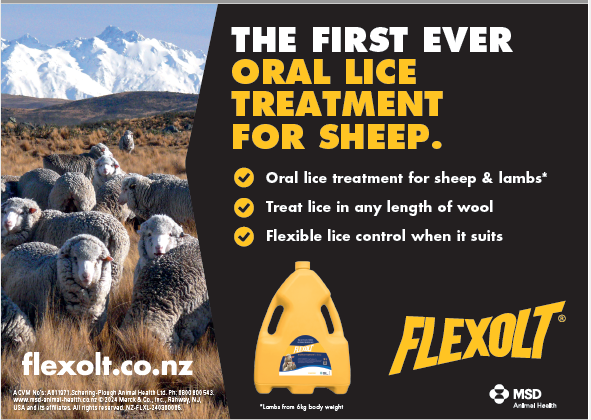
Ectoparasites such as flystrike and lice are among the most economically damaging issues in New Zealand sheep farming, costing millions annually in chemical treatments alone. While both pests require distinct control strategies, lice present unique challenges due to their tenacity and lifecycle.
Flystrike is a major animal welfare issue, and every effort must be made to prevent it. Native blowflies are seldom involved in flystrike – the problem flies were introduced from Australia and Europe mainly in the late 1900s. However, the Australian blowfly (Lucilia cuprina) is a relatively recent arrival and was first recorded in NZ in 1984. It has adapted well to the NZ environment and is now the most prevalent and significant strike fly here.
Flystrike is an opportunistic disease which occurs when there is a combination of specific environmental and animal factors. Blowflies fly during the day when it is warm, not too windy, and it is not raining. Flystrike occurs when there is moist, smelly, usually longer wool, often around the breech of the sheep.
Control strategies can reduce the animal risk factors. Through genetics is one pathway, for example the selection of breeds that grow less wool around the crutch (eg Wiltshires). Animal husbandry procedures like crutching and effective drenching can also help reduce flystrike. Finally, stock management, such as keeping stock out of sheltered gullies, reducing yarding of stock during risk periods, and not tailing too late in the season, is advisable.
Chemical application targeted prior to highrisk flystrike periods can be an important component of an integrated fly prevention programme. Organophosphates (OPs) should not be used for fly prevention due to their short protection period, recorded parasite resistance and human health risks. Spinosad gives short-term fly protection and treats active strike. There is a family of insect growth regulators (IGRs) called benzyl phenyl ureas or BPUs (triflumuron, diflubenzuron) that have recorded flystrike resistance in NZ. Many of these products are no longer in use in Australia for fly protection due to resistance issues.
There is a second group of completely different IGR chemicals which are comprised of either Cyromazine or Dicyclanil (eg Vetrazin™, CLiK™ ‘type’ products). This second group of IGRs is generally regarded as comprising the most effective chemicals to be employed for flystrike prevention, although they do not treat active strike. Despite widespread use, meaningful resistance has not been recorded in NZ or Australia. There are two IGR combination products, containing either Cyromazine and Spinosad or Cyromazine and ivermectin, which also treat active strike.
Lice infestations can reduce liveweight, fleece weight, wool quality, and pelt grading. Farmers often feel frustrated due to outdated regulations and the difficulty of eradication, especially on extensive fine wool properties. It is important to keep this in perspective while working with your animal health advisor to draw up an effective control strategy.
Lice spend their entire life cycle on sheep and can only survive a few days off the host. Transmission requires close contact—typically when sheep are penned together. Notably, lice can spread within 24 hours from a lactating ewe to her lamb during feeding. These factors make eradication theoretically achievable, but several practical challenges—such as incomplete mustering and poor dipping practices—make it a difficult goal.
Lice populations tend to increase over autumn and late winter. Shearing and exposure to sunlight naturally reduce lice numbers, but these methods offer no residual protection. Surveillance of lice numbers in mobs, although not common practice, could assist decision-making around chemical use—similar to how faecal egg counts guide drenching decisions. This would allow for more targeted and timely treatment.
There are a wide range of chemical treatments available, each with its own strengths and limitations:

A new treatment option arrived recently with the introduction of Flexolt®, a novel product that contains a new active ingredient and a new approach to treatment. Sheep are drenched with Flexolt®, meaning they are treated from the inside out. This is a game changer for lice treatment, as sheep can be treated as soon as lice are found, regardless of weather or wool length. Sheep do not need to be dry for treatment, making Flexolt® an extremely versatile product.
For an effective lice control programme:
If you are considering treating for lice or wondering if Flexolt® is right for your farm, talk to your local Vetlife representative to find the best solution for your situation.
Reference: Ectoparasites of sheep in New Zealand and their control. Society of Sheep and Beef Cattle Veterinarians of the NZVA (2nd edition).